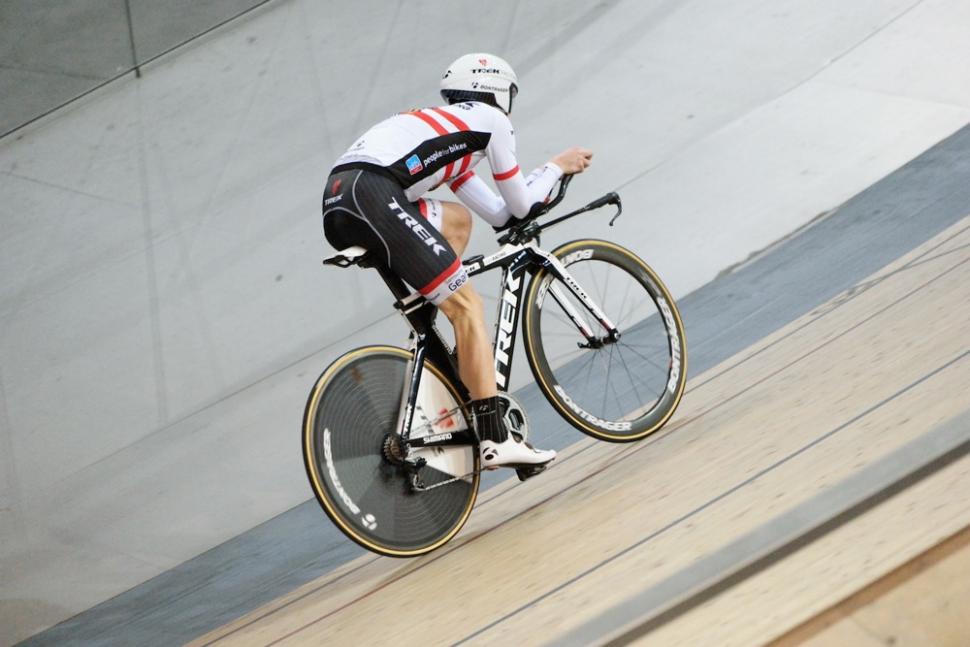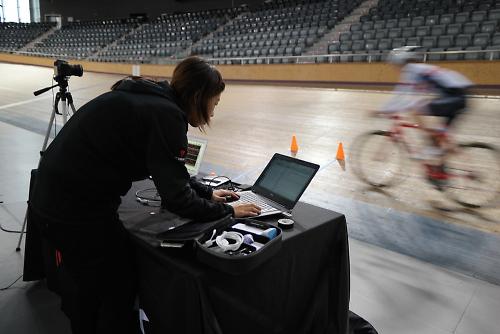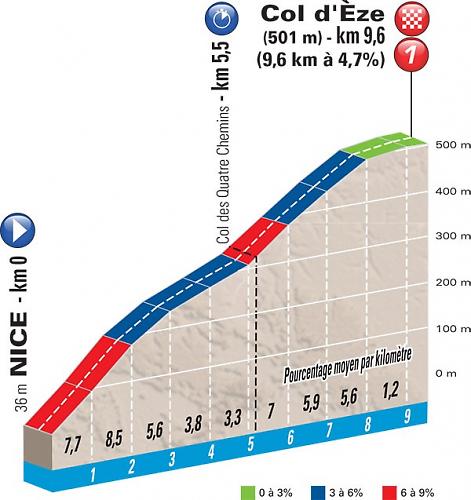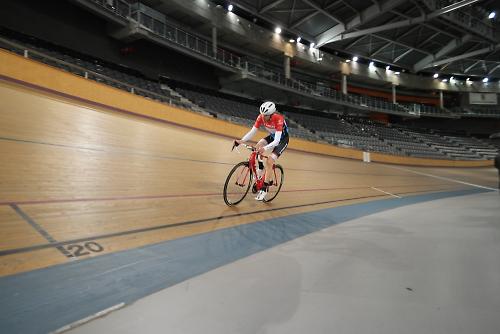- News
- Reviews
- Bikes
- Components
- Bar tape & grips
- Bottom brackets
- Brake & gear cables
- Brake & STI levers
- Brake pads & spares
- Brakes
- Cassettes & freewheels
- Chains
- Chainsets & chainrings
- Derailleurs - front
- Derailleurs - rear
- Forks
- Gear levers & shifters
- Groupsets
- Handlebars & extensions
- Headsets
- Hubs
- Inner tubes
- Pedals
- Quick releases & skewers
- Saddles
- Seatposts
- Stems
- Wheels
- Tyres
- Tubeless valves
- Accessories
- Accessories - misc
- Computer mounts
- Bags
- Bar ends
- Bike bags & cases
- Bottle cages
- Bottles
- Cameras
- Car racks
- Child seats
- Computers
- Glasses
- GPS units
- Helmets
- Lights - front
- Lights - rear
- Lights - sets
- Locks
- Mirrors
- Mudguards
- Racks
- Pumps & CO2 inflators
- Puncture kits
- Reflectives
- Smart watches
- Stands and racks
- Trailers
- Clothing
- Health, fitness and nutrition
- Tools and workshop
- Miscellaneous
- Buyers Guides
- Features
- Forum
- Recommends
- Podcast
TECH NEWS
 Trek FR Paris Nice 2015 1
Trek FR Paris Nice 2015 1Trek Factory Racing get scientific ahead of Paris-Nice uphill time trial
A new article from Trek Factory Racing ahead of this Sunday’s Paris-Nice uphill time trial gives an insight into the level of scientific analysis involved in both equipment selection and race strategy in professional racing today.
The Paris-Nice riders will race individually 9.6km (5.2 miles) up Col d’Èze, just outside Nice. That’s not long enough for massive time gaps to appear, but it’s the final stage of the race so any small advantage a rider can gain could have a major bearing on the overall finishing positions.
Trek Factory Racing say that they’ll be the first team to have conclusive data on what bikes and strategy are best for tackling the Col d'Eze time trial, where teams have tried just about everything in the past to get the edge over their competitors.
At the time of writing (Friday morning), Michal Kwiatkowski (Etixx-Quick Step) is leading Sky’s Richie Porte by just one second. Geraint Thomas (also Team Sky) is just two seconds further adrift. Ten other riders are within a minute of Kwiatowski, although that could all change before Sunday. Whatever happens between now and then, the uphill time trial could prove decisive.
The highest placed Trek Factory Racing rider is Riccardo Zoidl, 1:30mins off the pace in 21st position.

Back in January, Zoidl spent a day at the Velodromo Palma de Mallorca track with other team members Bob Jungels and Frank Schleck (Schleck was scheduled to race Paris-Nice but injury has prevented him taking part), coaches, support staff and engineers, to prepare for the Col d’Èze climb.
The track doesn’t seem the obvious testing ground for an uphill time trial but Trek Factory Racing are using software from Best Bike Split to help determine the best equipment choices and the best pacing strategies for race day conditions.
Best Bike Split says, “Our math and physics optimisation engine takes your power data, course info, and race day conditions to predict your race performance and create the perfect power plan so you can hit your best bike split ever.”
The biggest question for the team was the bike setup that each rider should use.

"The Col d’Èze is a little bit of a complicated time trial from an equipment selection perspective because it's an uphill TT, but a relatively gradual gradient,” said Trek Factory Racing’s technical director Jordan Roessingh.
“Historically, teams have been all over the place in terms of what equipment they have used: sometimes full TT bikes, sometimes road bikes with aero extensions, and sometimes just road bikes.”
The team took aerodynamic values of the different setups on the Mallorca track – the riders on Trek Emonda road bikes, Emondas with aero extensions, and on Trek Speed Concept TT bikes – and also various helmet options.
“The aero data… was then turned over to Best Bike Split who plugged these raw aero measurements (along with athlete critical power curves, course maps, weather data, equipment weights, rolling resistance measurements, and Trek’s massive library of wheel combination wind tunnel data) into a math and physics optimisation engine to generate a highly realistic race simulation for Jungels and Zoidl in the uphill race against the clock Sunday,” say Trek Factory Racing.

As well as informing equipment choice, the software is designed to help with race strategy. With a gradient that varies up the climb, it’s not simply a question of getting into one position and intensity and holding that for the entire course.
“Using the testing data for aerodynamic drag from the velodrome for all the potential race setups gave us a great deal of inputs into the Best Bike Split models,” said Ryan Cooper, chief scientist behind the Best Bike Split web app.
“By knowing Bob’s and Riccardo’s drag for the various equipment (bike, wheels, helmet) and positions we can give a very accurate time difference for all potential race setups for the course.
“The models look at places on the Col d’Èze course where the riders should stay in a more aero tucked position versus when they should come out of the tuck for a more powerful climbing position. Wind can play a large role in equipment choice as well. While this is minimised by the terrain of this particular course, it is another factor that will be considered on race day when the final bike selection will likely be made.”
So, the team will make their final decisions according to the conditions on the day – not that they’d be revealing those decisions ahead of time even if they’d already been made.
Of course, it’s the riders rather than the bikes that will make the real difference, but the idea of all this analysis is to give each of them the best chance of putting in a big performance on Col d’Èze on Sunday.
For more info to Trek Factory Racing’s website. Best Bike Split is available to regular cyclists, not just pro teams, online.
Mat has been in cycling media since 1996, on titles including BikeRadar, Total Bike, Total Mountain Bike, What Mountain Bike and Mountain Biking UK, and he has been editor of 220 Triathlon and Cycling Plus. Mat has been road.cc technical editor for over a decade, testing bikes, fettling the latest kit, and trying out the most up-to-the-minute clothing. He has won his category in Ironman UK 70.3 and finished on the podium in both marathons he has run. Mat is a Cambridge graduate who did a post-grad in magazine journalism, and he is a winner of the Cycling Media Award for Specialist Online Writer. Now over 50, he's riding road and gravel bikes most days for fun and fitness rather than training for competitions.
Latest Comments
- David9694 2 hours 44 min ago
Active travel schemes are 'squeezing out motorists in favour of cyclists' Go Rochdale!
- mdavidford 3 hours 20 min ago
You don't like the Look of it then?
- chrisonabike 3 hours 31 min ago
TBF I think their complaint was with the design as proposed. There would be a cycle path with cyclists moving in two directions with little buffer...
- dh700 6 hours 52 min ago
I'd argue that nothing at all is wrong with the bans that you describe -- and they exist in some places....
- slc 7 hours 13 min ago
You seem to be forgetting the first article in our great constitution. A citizen has the right to store motor vehicles immediately outside their...
- Jakrayan 8 hours 21 min ago
Yeah, the number of times I've had oncoming drivers overtake a stationary vehicle - parked car on their side for example - forcing me to hit the...
- bobbinogs 8 hours 38 min ago
I always think that the Pearson font is such a dreadful choice, it's almost impossible to read.
- David9694 12 hours 32 min ago
A bit of light rain is all it was on Friday ...
Add new comment
4 comments
Who thought testing could be so interesting?
And that's coming from a tester!!
i'll be surprised if trek and Zoidl can make up the 1.30s he's behind...even with all that tech..catching your minuteman is a lungbusting effort on the flat , let alone riding up that hillock..
Now if they don't finish in the top 20 on the day it'll seem like a lot of effort wasted. I know it's not that simple on the day, and how they feel is as important as anything else, but that does seem like a lot to go through.
Presumably they extrapolate this for any TT they compete in all year?
So they had aero testing....for a TT and chose the best kit, then got told to pace their ride
Big news